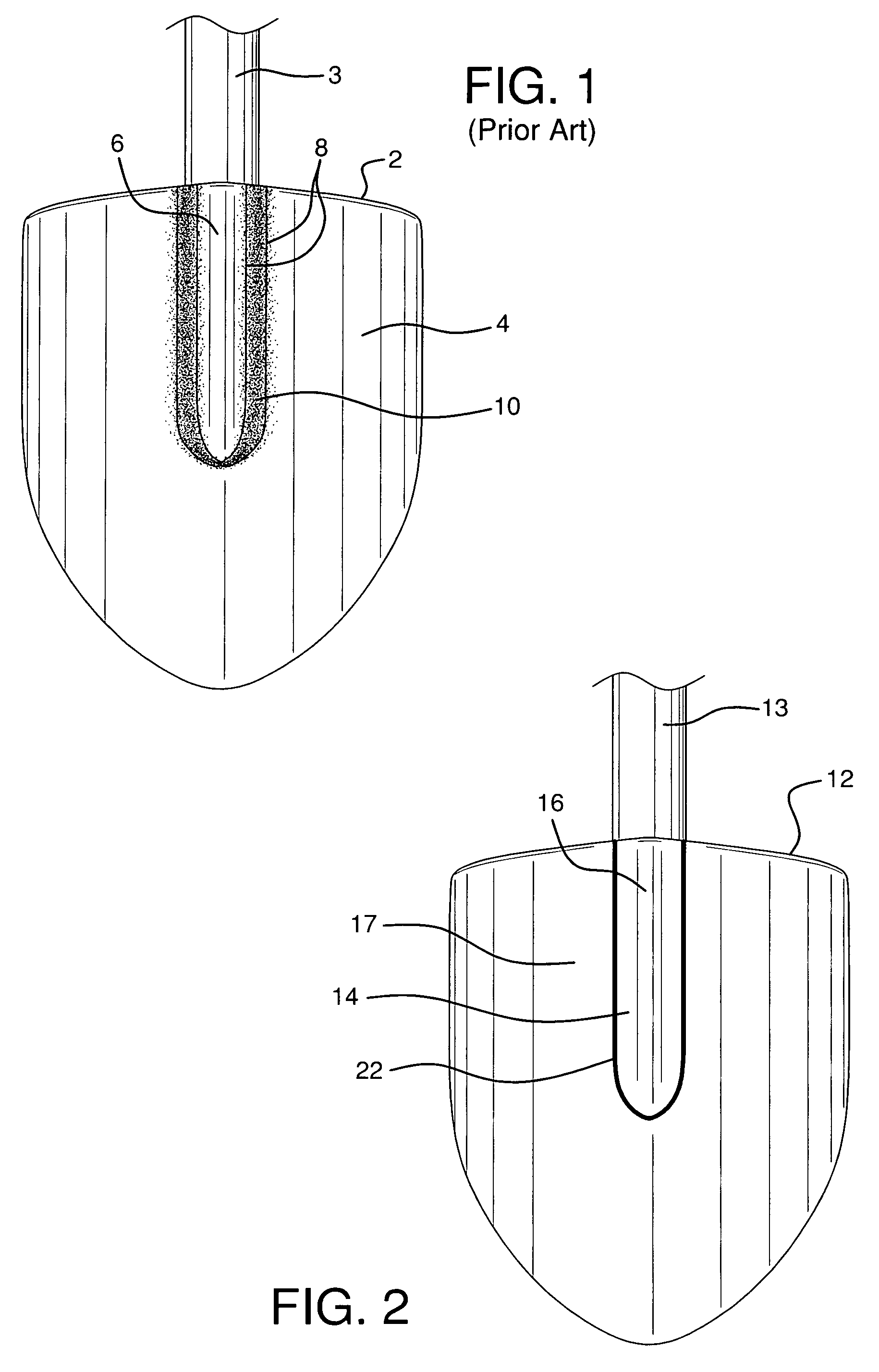Tool assembly heat treatment method
a technology for heat treatment and tools, applied in heat treatment equipment, soldering equipment, furnaces, etc., can solve the problems of fractured attachment area of tool head to handle, steel handle bending or steel handle bending, etc., to increase the strength of weld joints, simple tools, and high degree of stress
- Summary
- Abstract
- Description
- Claims
- Application Information
AI Technical Summary
Benefits of technology
Problems solved by technology
Method used
Image
Examples
Embodiment Construction
[0014]The method of the subject invention is directed towards the construction and subsequent heat treatment of industrial grade manual tools and, specifically, their tool head to handle or handle attachment connections. The method is directed to the use of matching, non-heat treated, compatible material such as steel alloys, for the tool heads and steel handles or attachment sockets. These components are welded together prior to their heat treatment, resulting in a superior weld joint without the normal annealing which occurs during welding. Such tools are, as a result, extremely resistant to bending or breaking under normal usage. With regard to spades and shovels, a stronger blade-to-handle junction is created, as no annealing takes place, compared to blades and handles which are first heat treated separately then welded together.
[0015]FIG. 1 illustrates tool handle 3 and back side 4 of spade blade 2 that has had the end of the handle or a handle attachment 6 welded to its face a...
PUM
| Property | Measurement | Unit |
|---|---|---|
| temperature | aaaaa | aaaaa |
| temperatures | aaaaa | aaaaa |
| temperatures | aaaaa | aaaaa |
Abstract
Description
Claims
Application Information
 Login to View More
Login to View More - R&D
- Intellectual Property
- Life Sciences
- Materials
- Tech Scout
- Unparalleled Data Quality
- Higher Quality Content
- 60% Fewer Hallucinations
Browse by: Latest US Patents, China's latest patents, Technical Efficacy Thesaurus, Application Domain, Technology Topic, Popular Technical Reports.
© 2025 PatSnap. All rights reserved.Legal|Privacy policy|Modern Slavery Act Transparency Statement|Sitemap|About US| Contact US: help@patsnap.com



